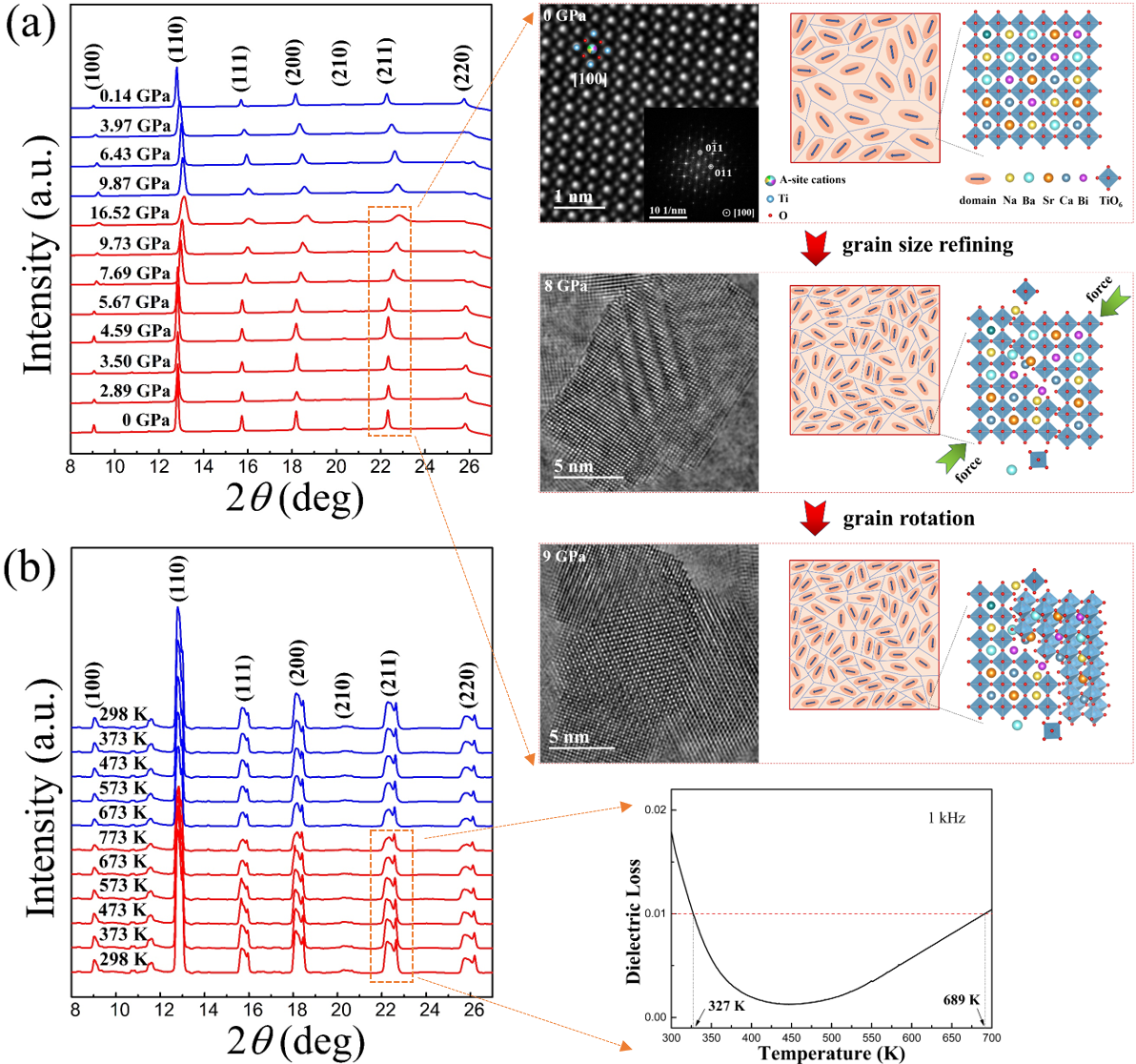Combined high pressure research using diamond anvil cells and sub-atomic resolution observations, a team of scientists led by Dr. Zhiqiang Chen from HPSTAR, collaborating with Prof. Yu Deng from Nanjing University, carry out the cross-scale mechanism analysis on high-entropy La-modified (Bi0.2Na0.2Ba0.2Sr0.2Ca0.2)TiO3 ceramic induced by pressure and temperature and found that this ceramic material showed ultrastable dielectric performance within 327–689 K and up to 7 GPa. The study is published in Advanced Electronic Materials.
In the past decades, high-entropy relaxor ferroelectric ceramics had drawn more and more attention due to their remarkable properties in the potential applications of energy storage. Compared with other dielectric ceramics, high entropy ceramics have higher power density, faster charge-discharge rate and higher energy efficiency due to their special polar nanoregions.
For practical applications, high entropy dielectric materials need to endure variable temperature, pressure, or chemical environments. The atom-scale microstructure is critical to understand the mechanism of stability upon the high pressure and temperature, however, for high entropy dielectric materials, these are rarely discussed and studied so far.
Thus, Chen and colleagues set out to do such study. Firstly, they synthesized a high-entropy relaxor ferroelectric ceramic, La-modified (Bi0.2Na0.2Ba0.2Sr0.2Ca0.2)TiO3 and the La doping molar ratio is 5%, and then carriied out cross-scale mechanism analysis on the evolution of its microstructure with pressure and temperature. The results show that the material has a very superior thermal stability in a wide temperature range of 327-689 K according to a high standard of tan δ < 0.01. Moreover, the material also has excellent mechanical stability below 7.7 GPa, when the compression is continued, the grain size refining (8 GPa) and grain rotation (9 GPa) will occur in turn. The suitable doping of multiple cations improves the stability of ceramics, which paves the way of practical application under extreme environments.

Caption: In situ XRD patterns of the La-modified (Bi0.2Na0.2Ba0.2Sr0.2Ca0.2)TiO3 evolving with (a) pressure and (b) temperature, with the inset photographs of HRTEM images and the temperature-dependent dielectric loss.
高熵介电陶瓷因其一系列优异的介电性能而备受关注。来自北京高压科学研究中心(HPSTAR)的陈志强课题组与南京大学邓昱等研究团队合作,结合金刚石压砧高压研究和亚原子分辨率观测显微技术,对压力和温度诱导下的高熵陶瓷La-(Bi0.2Na0.2Ba0.2Sr0.2Ca0.2)TiO3进行了全面跨尺度的机理分析。重点研究了该材料的微观结构随温度和压力的演变行为和其对介电性能的影响。他们发现在温度327K-689K,7GPa压力范围内,La-(Bi0.2Na0.2Ba0.2Sr0.2Ca0.2)TiO3是一种非常稳定的介电陶瓷材料。相关结果以“High-Entropy La-(Bi0.2Na0.2Ba0.2Sr0.2Ca0.2)TiO3 Ceramic with Ultrastable Dielectric Performance within 327-689 K and up to 7 GPa”为题发表于近期的《Advanced Electronic Materials》上。
